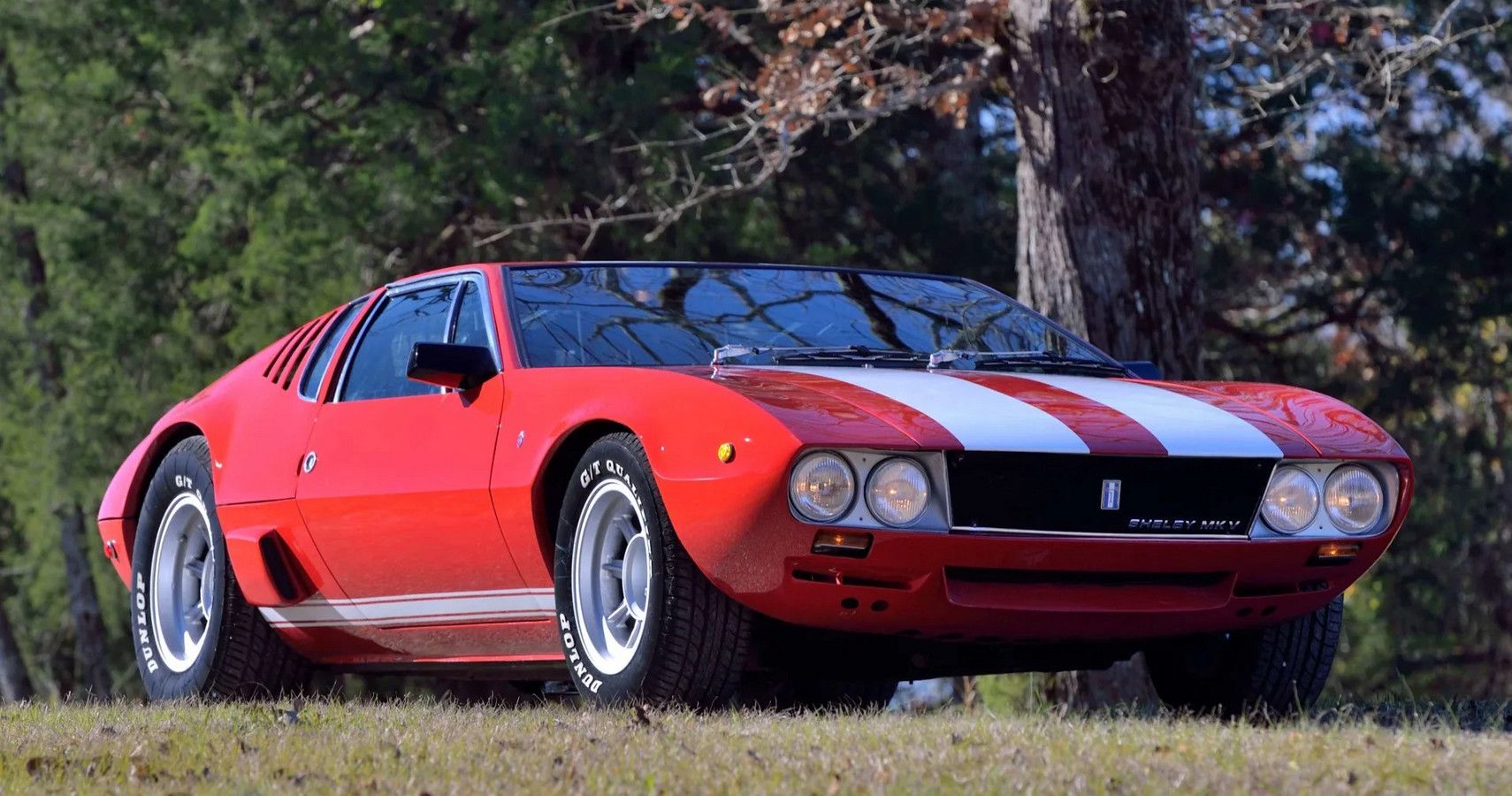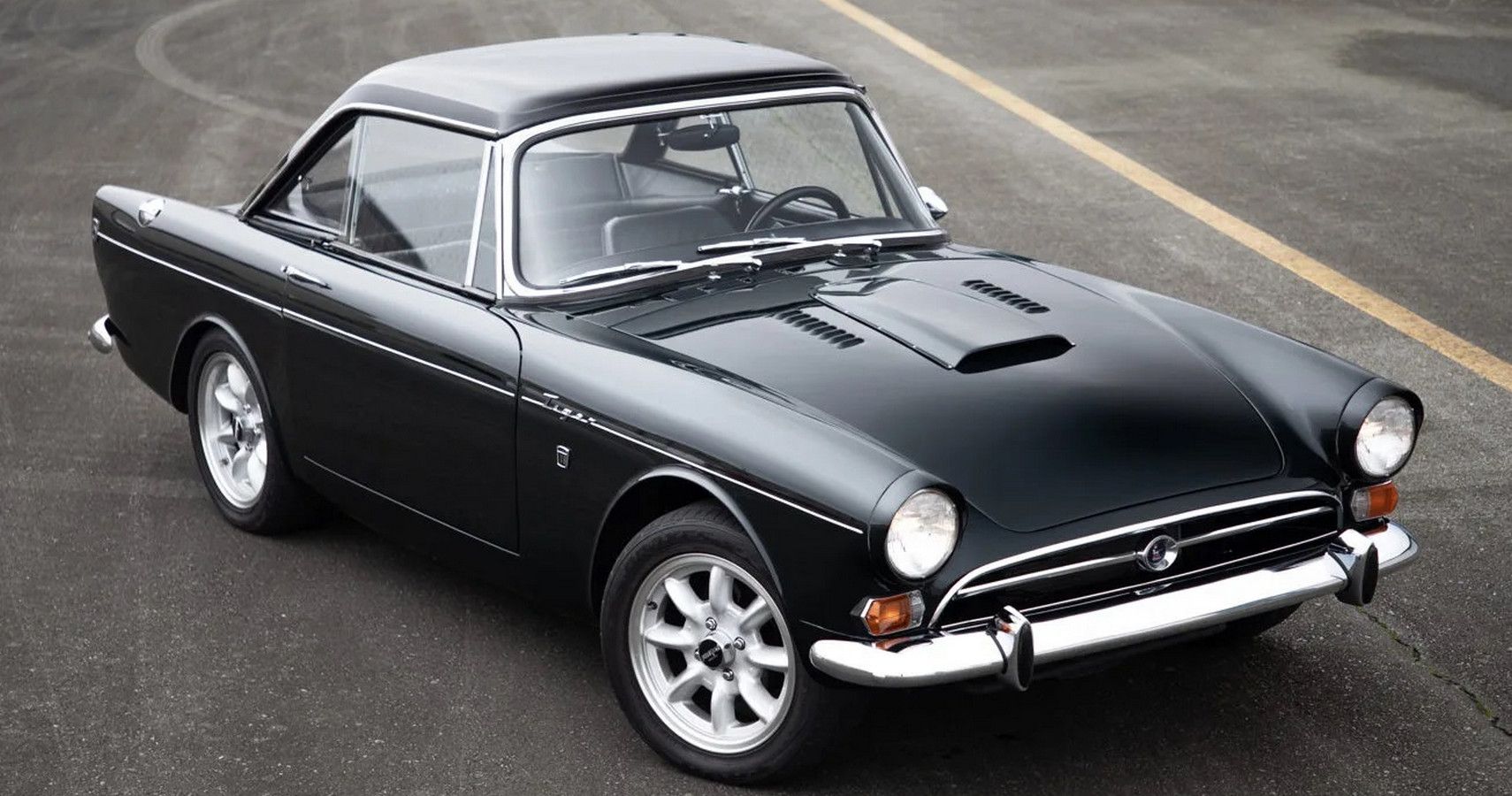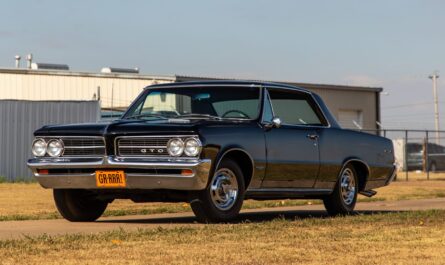Muscle cars, nothing else elicits as much adoration and craving as big V8-engined two-door coupes. Chevrolet, Ford, Pontiac, and countless others have all played the muscle car trump card. To get your head around what exactly makes a muscle car a muscle car, you need to get under the hood. Of all the legendary greats, Ford’s Windsor V8 ruled the roost.
HOTCARS VIDEO OF THE DAY

What is a muscle car? Answers vary enormously depending on your sources. But generally, any midsize coupe sporting an oversized V8 engine does the trick. This opens the door for some surprising greats, all used Windsor small block engines.
The Ford connection is obvious in anything wearing the blue oval logo. But other carmakers seeking cheap, reliable power also tapped into the Windsor’s small size and high-power outputs. Dozens of small British carmakers bought Ford V8s, as did many other European marques. Given its factory name, the Windsor actually bore the Ford Small Block name, evolving over time. While Windsor officially ended production in 2002, the lessons learned went on to inspire Ford’s later engines.
Any lingering doubts the Windsor was all bark and no bite need look no further than the racetrack. In 1968 Ford’s world-beating GT40 downsized to a 5-liter Windsor and still conquered all comers at Le Mans. The Windsor V8 might be gone, but its legacy lives on in these legendary classic cars.
101966 AC Cobra

Legends rarely come better suited to their image than Carroll Shelby’s AC Cobra. Built from the ground up as a no holds barred roadster, able to mix it up with anything Europe had to offer. At the heart of this iconic roadster is none other than a Ford Windsor V8, displacing 4.7 liters. Among gearheads, the AC Cobra divides opinion over its muscle car/sports car status regularly.
A huge part of the car’s startling performance came about through a weight-saving chassis and body, but it’s the V8 that steals the show. Making use of every one of the 271 hp available, Cobras can blast to sixty in 5.1 seconds, running to a top speed of 138 mph. Refined it wasn’t, but name another performance car that sounds and goes this well.
91969 Mercury Cougar

The benefits of Ford’s extended family of car brands are easy to understand. For every gearhead, budget, and class, there is a Ford Windsor-powered muscle car. Enter the Cougar, in reality, a re-engineered Ford sharing the same platform as other cars in its class. The only difference is a price hike reflecting Mercury’s more upmarket image.
Beneath all the glitz and chrome work, it was business as usual. Powering the Cougar was a choice of Windsor V8s ranging from 289 CID to 351 CID cranking out as much as 290 hp in 4-bbl form. Where the price hike makes an argument for itself is on a drag strip where sixty was within reach in under 7 seconds.
81966 De Tomaso Mangusta

Ford power found its way into the engine bays of several foreign brands during the 1960-70s. None more so alluring than De Tomaso’s Mangusta and later the Pantera. For the Mangusta, Alejandro de Tomaso turned to Giugiaro for the car’s two-door coupe body. While the Mangusta shares a typical wedge shape profile, at the rear it adopts a quirky two-piece hood.
Despite the quirky layout, it was business as usual for De Tomaso. Italian panache gave way to Ford power for what would be one of De Tomaso’s rarest production cars. Tucked away behind the cockpit was a Windsor V8 of varying displacement, peaking at 4.9 liters and 230 hp. More fortunate European gearheads gained a smaller 4.7-liter V8 rated at 306 hp, adding to the Mangusta’s muscle car credentials.
71964 Sunbeam Tiger

Not for the first time did Ford and Carroll Shelby pluck a little-known British roadster and give it a US V8 makeover. The resulting Tiger took the Alpine and bestowed it with more cylinders, hiking output to 200 hp. The gains were immediately evident in both a drag to sixty taking 7.5 seconds, flat out posting a top speed of 122 mph.
Over the Tiger’s lifespan of four years, two variants of the Windsor V8 found homes in the roadster. In the Mk. I (1964-67) detuned 260 CID motors lifted from the Mustang and avoided direct competition with Ford’s coupe. For the final year, a larger 289 CID gave the Tiger II a welcome boost in performance. In total, Ford Windsor V8s powered 7,128 examples.
62001 Ford Falcon XR8 Tickford Pursuit AU

Ford’s global presence and the Windsor V8 also made it down under. In place of performance cars, Ford Australia combined the beating heart of an American muscle car with a sedan. The XR8 also took on another form, appearing as a Ute capable of insane speeds. Pull up alongside one of these at the lights and prepare to lose. At full tilt, the XR8 takes off like a scalded cat, hitting sixty in 5.5 seconds.
How can a sedan packing a 4.9-liter V8 be so quick? The clue is in the name. While it says Ford on the block, Tickford enlarged the bores, added custom exhausts, and fiddled with the compression ratio. The net result is 295 hp backed up by 320 ft-lbs of twist.
51995 Mustang SVT Cobra R

No lineup of Ford performance cars would be complete without at least one Mustang. Picking one example over another is a trickier proposition than you might think. In 1995, Ford upped Windsor’s pedigree by enlarging the V8 motor to 5.8 liters before rolling out the SVT Mustang Cobra R.
In real-world terms, the extra cubic inches increased power output to a useful 300 hp. Pairing the Windsor with a TR-3550 5-speed transmission gave a credible turn of speed. Flooring the gas pedal resulted in a top speed of 151 mph, with sixty needing 5.4 seconds. Like all Ford specials, the Cobra R is a rare beast, with production limited to 250 cars.
41967 TVR Griffith 400

Meet Trevor from Blackpool, a small lightweight Brit with a muscle car heart. Trevor aka TVR is one of the meanest V8-engined cars ever. Despite an old-school body and chassis, the Griffith 400 tips the scales at 1940 lbs and boast 306 hp. If there is one thing TVR is good at, it’s insane power-to-weight ratios. The Griffith 400 is no exception at 354 hp per ton.
Every TVR since the carmaker’s inception has used parts from other carmakers. For Griffith, TVR turned to Ford’s tried and tested Windsor V8 displacing 4.7 liters. In a car weighing so little, it comes as no surprise that Griffith was blisteringly quick. Posting a top speed of 155 mph, requiring 4.6 seconds to reach sixty, the Griffith easily matches US muscle cars. TVR stopped short of building its successor, a Griffith 600 selling the naming rights to Steve Wilder under the Omega brand.
31969 Ford Mustang Mach 1

The first of a breed, the Mustang Mach 1 name, appeared in 1969, hinting at speeds no road car is capable of. Regardless of the misleading name tag, the Mach 1 became a legend as Ford’s premium model. Before the Mustang, Ford had used the Mach 1 name on their Levacar concept vehicle from 1969.
In production trim, Mach 1’s used a tweaked version of the Windsor V8 in a fastback body. From 1969-1970, Mach 1 quickly outsold its GT sibling by 67,000 units. During its short production life, two 351W options existed, cranking out between 250 and 290 hp. Yet, the Mach 1 wasn’t only powered by the Windsor 351 V8. Ford also offered up Cleveland and Cobra jet versions, displacing up to 7 liters.
21964 Mercury Comet Cyclone

While Ford developed the Windsor for several of its performance cars, not every hot Ford brand used the name. Falling in line with the space race, Mercury’s Comet spawned a faster variant dubbed the Cyclone. Despite its space-age name, Windsor V8s bearing the K-Code remained unchanged.
Clever marketing aside, the Comet Cyclone packed a 210 hp 4.7-liter V8 driving the rear axle via a 4-speed transmission. In terms of performance, Ford’s newly announced Mustang had the upper hand with more power on tap. Yet for gearheads looking for something unique, the Cyclone ticks all the right boxes.
11969 Ford Fairlane 500 Sportsroof

Ford’s list of sports-oriented car names keeps getting bigger. Having used the Fastback on the Mustang, the Fairlane 500 shipped under the less creative Sportsroof name. Given a decent amount of time, we’re sure we could come up with something better. Regardless, adding a sloped roof-line was in for the ’60s and added a touch of coolness to a regular coupe.
Sportier bodywork demanded a beefed-up engine. Ford’s Windsor 351 had already proved itself on track, making it the perfect midsize muscle car. Over time the Fairlane would re-emerge as the Torino carrying on the Windsor’s muscle car heritage. As for the Fairlane 500, gearheads shouldn’t get too excited by the prospect of 500 hp. The naming refers to the displacement of the engine instead.

